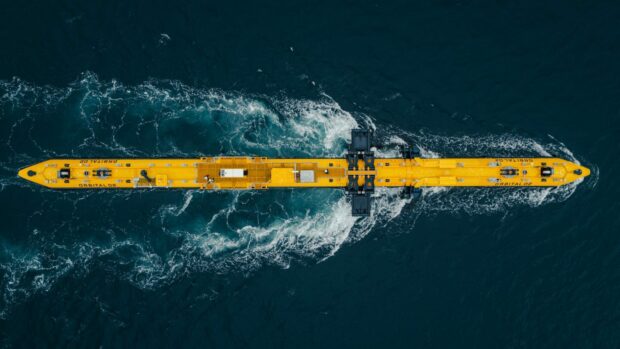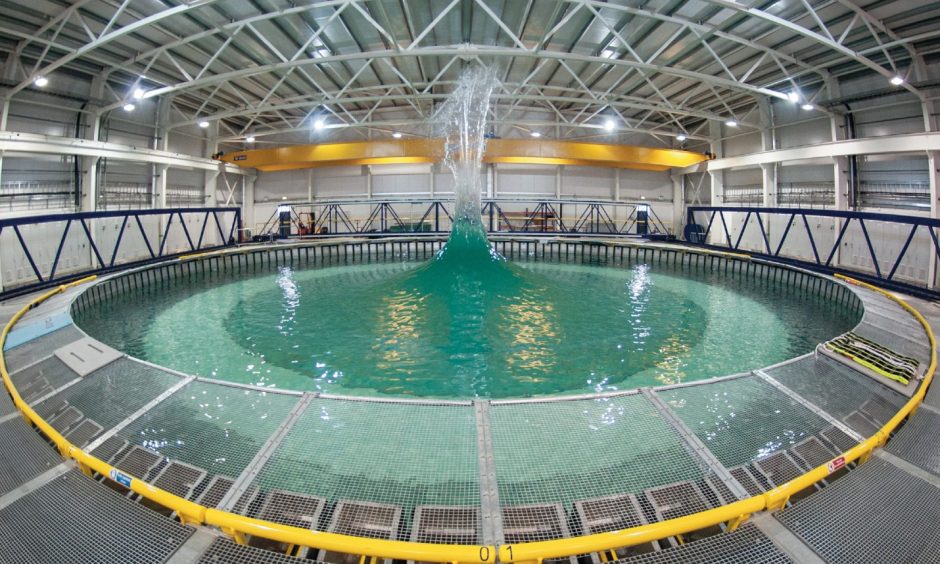The North and North-East risk losing out on tens of thousands of tidal stream and wave energy jobs without “significant coordinated investment.”
A new report says Scotland’s position as a global leader in tidal stream and wave energy could deliver more than 60,000 jobs and an £8 billion economic prize by 2050.
The majority of these jobs will be in the Highlands and Islands, with the potential for offshore workers to shift away from oil and gas.
Currently a world leader in emerging technology around tidal and wave energy, Scotland is on the brink of large-scale commercialisation.
However, the report, commissioned by Scottish Enterprise (SE) and Wave Energy Scotland (WES), warns that investment is required, or Scotland’s lead “will be eroded.”
Johanna Money, who works with Scottish Enterprise’s tidal team in Aberdeen, said that Scotland’s marine energy industry could quickly lose its competitive advantage if there is not enough public and private sector support.
“The technologies are here, the expertise is here, but we need to act now,” she warns.
“Other countries are starting to catch up, and if we don’t continue supporting these sectors, we risk losing out.”
Marine energy jobs at risk
This warning is echoed by Elva Bannon, research and engineering manager at Inverness-based development body WES, who said that Scotland must act quickly to avoid losing ground to countries like the US and Japan, which are ramping up their marine energy investments.
“Scotland is genuinely the best place for wave energy,” she says. “We’ve been leading the world for years.
“The types of skills needed for wave and tidal energy, as well as offshore wind, are the kinds of skills you can find around Aberdeen.
“People here have the right temperament to work in the North Sea, and that’s incredibly valuable.
“We’ve proven the technologies, and they work.
“Now we just need the market to show clear signals and make the financial investment to put these machines in the water.”
According to Elva, despite the progress made in technology development, the sector still faces a significant challenge: securing large-scale financing to deploy these technologies.
Both experts emphasise the urgent need for continued financial backing and a clear, supportive policy framework to unlock the full potential of marine energy.
What’s needed now, says Elva, are project developers and large corporate entities who can take investments of multiple millions of pounds.
She adds: “I think all of the different agencies across Scotland need to work together to ensure companies can develop the technology and then turn that into a commercially viable business.”
If Scotland achieves a position as a ‘world leader’ by 2050, it could support 62,400 jobs — 15,600 workers for domestic projects and 46,000 jobs from export markets.
But more moderate ambitions for the markets could see this total drop to just 12,400 jobs by 2050.
Danger Scotland’s lead will be eroded
The report states: “Achieving these outcomes will require significant shared responsibilities across the entirety of the supply chain.
“Without significant coordinated investment and guided policy support for Scottish technology developers, along with strategic investment in high-value areas of the domestic supply chain, there is a clear danger that Scotland’s lead will be eroded.
“This could ultimately result in tidal stream and wave energy sectors overseas overtaking Scotland’s present advantage, as has happened in other energy sectors.
“This situation must be avoided if Scotland wishes to capitalise on the gross value added and jobs figures outlined within this report.”



Conversation